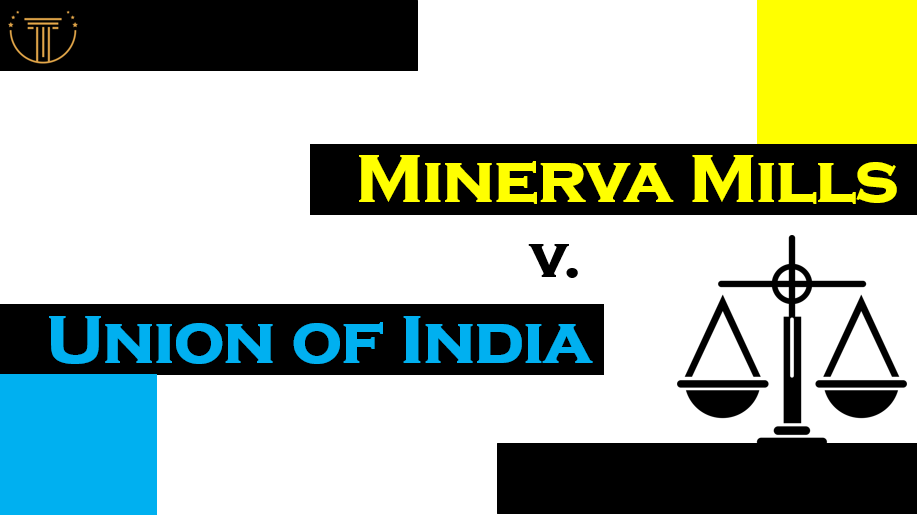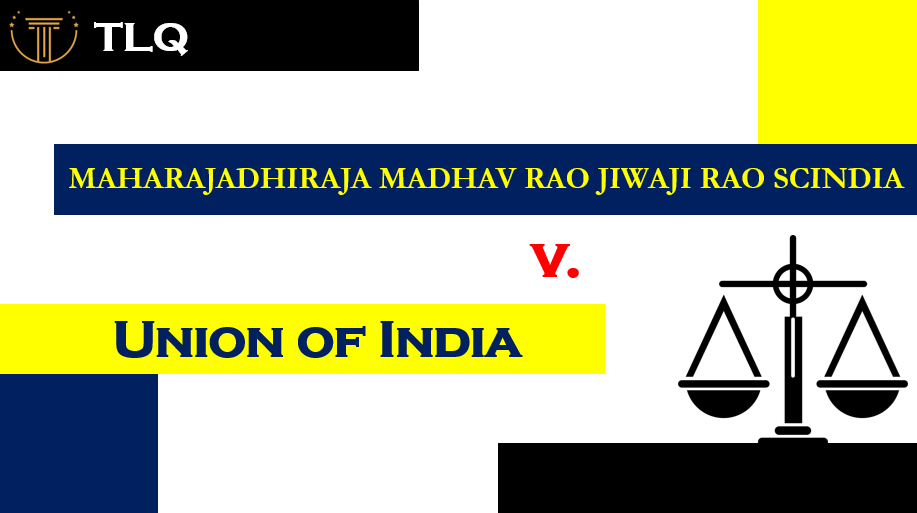Published on 19th February 2025
Authored By: Maryam Khalid
Gillani Law College
Introduction
The case of Kesavananda Bharati v. State of Kerala (1973) is one of the most significant decisions in India’s constitutional history. It resolved the conflict between legislative power and judicial review by introducing the Basic Structure Doctrine. This judgment established that while the Parliament could amend the Constitution, it could not alter its “basic structure.” Additionally, it invalidated the provision on judicial review introduced in the Twenty-Fifth Amendment. This analysis explores the judgment’s background, implications, and its role in shaping India’s constitutional jurisprudence.
Background
India’s constitutional framework witnessed early clashes between the judiciary and legislature, particularly over property rights. The land reform laws introduced after independence, which curtailed the rights of zamindars, led to constitutional amendments to protect such laws from judicial review. This conflict set the stage for the Kesavananda Bharati case.
Early Judicial Interpretations
- Shankari Prasad v. Union of India (1951)
In this case, the First Amendment, which added the Ninth Schedule to the Constitution, was challenged. The Supreme Court ruled that constitutional amendments under Article 368 were not “laws” under Article 13(2) and hence could not be reviewed.
- Sajjan Singh v. State of Rajasthan (1965)
This case questioned the validity of the Seventeenth Amendment, which further protected land reform laws. The Court upheld Parliament’s power to amend the Constitution but hinted at the need to preserve its basic features.
- Golak Nath v. State of Punjab (1967)
The Supreme Court, by a slim majority (6:5), held that Parliament could not amend Fundamental Rights. This judgment emphasized the supremacy of Fundamental Rights over constitutional amendments, creating tension between the judiciary and legislature.
The Legislative Response
Parliament responded to Golak Nath by passing the Twenty-Fourth and Twenty-Fifth Amendments. These amendments sought to restore parliamentary supremacy by explicitly stating that amendments were not “laws” under Article 13 and giving primacy to Directive Principles over Fundamental Rights.
Facts of the Kesavananda Bharati Case
The case arose when Swami Kesavananda Bharati, the head of a religious math in Kerala, challenged the Kerala Land Reforms Act, 1963, which affected his property. During the proceedings, the Twenty-Ninth Amendment, which placed certain land reform laws in the Ninth Schedule, was enacted, leading to the challenge of its validity along with the Twenty-Fourth and Twenty-Fifth Amendments.
Issues
- Whether Parliament’s power to amend the Constitution under Article 368 was unlimited.
- Whether the Fundamental Rights could be amended.
- Whether amendments that affected the “basic structure” of the Constitution were valid.
Judgment
The case was decided by a 13-judge bench, the largest in Indian judicial history. The Court delivered a 7:6 majority verdict, overruling Golak Nath but introducing the Basic Structure Doctrine.
- Basic Structure Doctrine
The Court held that while Parliament could amend any part of the Constitution, it could not alter its basic structure. This doctrine aimed to preserve the Constitution’s identity and democratic spirit.
- Judicial Review
The Court invalidated the clause in the Twenty-Fifth Amendment that sought to limit judicial review.
- Validity of Amendments
The Court upheld the validity of the Twenty-Fourth and Twenty-Ninth Amendments but struck down parts of the Twenty-Fifth Amendment that violated the basic structure.
Elements of the Basic Structure
Chief Justice Sikri and other judges identified certain features as part of the basic structure, including:
Supremacy of the Constitution.
Republican and democratic form of government.
Secular character of the Constitution.
Separation of powers among the legislature, judiciary, and executive.
Sovereignty and unity of the nation.
Fundamental rights and individual dignity.
Parliamentary democracy.
Significance
- Preserving Constitutional Identity
The doctrine safeguarded essential democratic principles, ensuring that Parliament could not undermine the Constitution’s foundational values.
- Balance of Power
The judgment established a balance between the amending power of Parliament and the judiciary’s role in upholding constitutional integrity.
- Judicial Review
By retaining judicial review, the Court reinforced its role as the guardian of the Constitution.
Criticisms
- Lack of Uniformity
The judges presented varied opinions on what constituted the basic structure, leading to a lack of clarity.
- Judicial Overreach
Critics argue that the Basic Structure Doctrine was not explicitly mentioned in the Constitution and represented judicial overreach.
- Uncodified Doctrine
The lack of codification of the doctrine leaves it open to subjective interpretation, potentially creating ambiguity.
- Binding Future Generations
By asserting that certain principles were immutable, the judgment was criticized for binding future parliaments and generations.
Why the Doctrine Should Not Be Codified
- Flexibility
Codifying the doctrine would limit its adaptability to unforeseen challenges.
- Judicial Independence
The doctrine’s open-ended nature allows courts to interpret it as per evolving circumstances, preserving judicial independence.
- Risk of Legislative Overreach
Codification could enable a parliamentary majority to amend or abolish the doctrine, undermining its purpose.
- Democratic Spirit
An uncodified doctrine ensures that constitutional interpretation remains dynamic, reflecting the will of the people over time.
Conclusion
The Kesavananda Bharati judgment is a cornerstone of Indian constitutional law. It preserved the Constitution’s integrity by limiting Parliament’s power while empowering the judiciary to protect its basic structure. Despite criticisms, the doctrine remains a robust tool for upholding democratic principles. By resisting codification, the judgment ensured that the Constitution could evolve with changing times, safeguarding its core values for future generations.
References
- Kesavananda Bharati v. State of Kerala [1973] Supreme Court of India.
- Zia Mody, 10 Judgments That Changed India (Penguin, 2013).
- Ayushi Modi and Rohan Upadhyay, “Supreme Court Case Analysis: Kesavananda Bharati v. State of Kerala,” Latest Laws (2018).
- Ipleaders, “Doctrine of Basic Structure – Evolution.”
- Sri Sankari Prasad Singh Deo v. Union of India [1951].
- Sajjan Singh v. State of Rajasthan [1965].
- Golak Nath v. State of Punjab [1967].
- com, “Why Kesavananda Bharati v. State of Kerala Case is Considered Landmark.”


